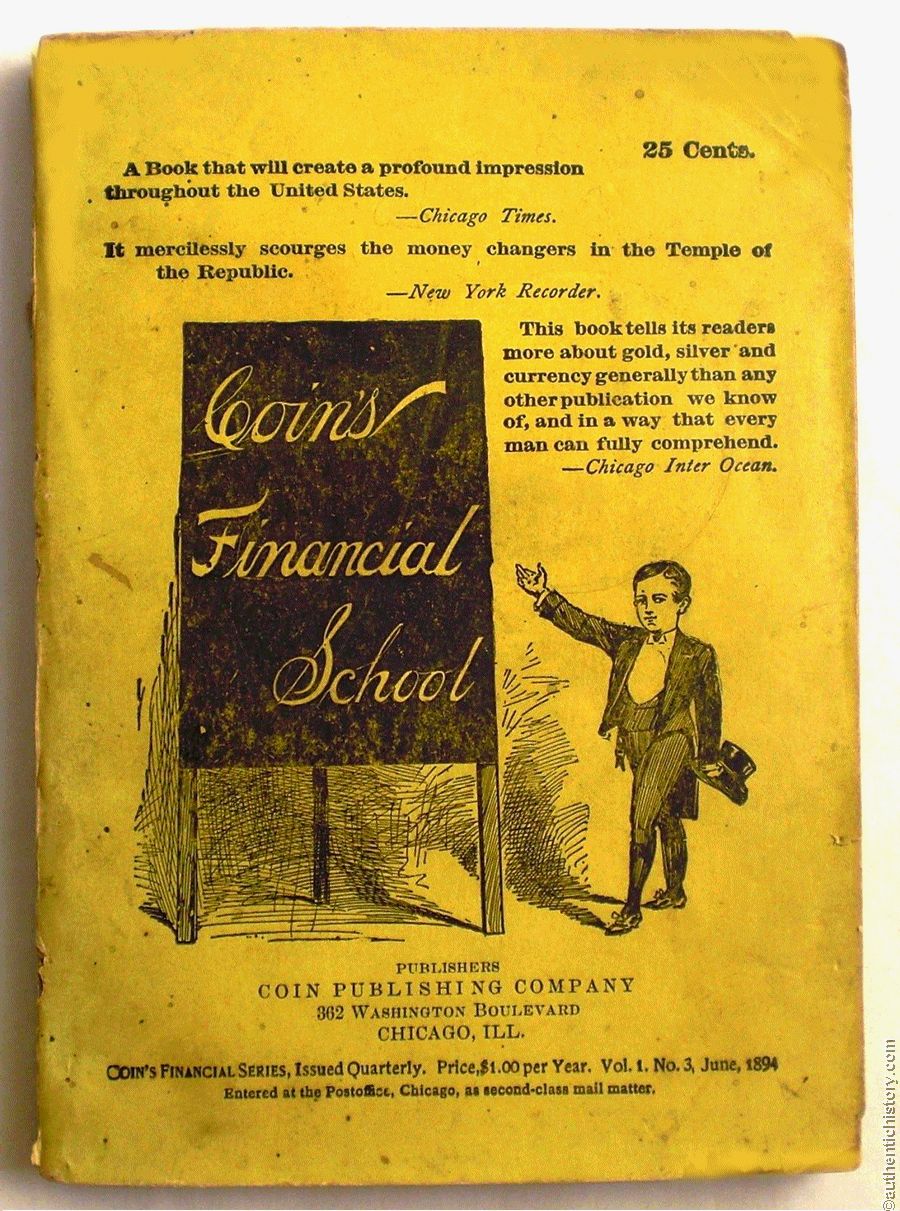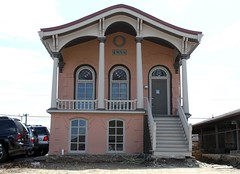
PREV ARTICLE
NEXT ARTICLE
FULL ISSUE
PREV FULL ISSUE
WILLIAM HARVEY AND COIN'S FINANCIAL SCHOOL
An article I ran across today that relates to an author some of you may have come across searching for numismatic books. Here's some
information I gathered from several sources. I had a couple of these in my library at one time. -Editor
From Wikipedia:
The thesis of Coin's Financial School is that London arranged the end of the free coinage of silver in 1873 because they had gold cornered and thus the large Civil War debt became payable in gold instead of silver. The Coinage Act of 1873 demonetized silver by allowing repayment of all debts in gold or silver at the option of the holder of the debt. The deflation resulting from the immediate removal of a significant portion of the nation's money supply affected agriculture and business severely. To read the complete Wikipedia article, see:
Here's some more biographical information on Harvey. -Editor
William Hope “Coin” Harvey founded both the resort of Monte Ne (Benton County) and the Ozark Trails Association, establishing him as a pioneer in the promotion of Arkansas tourism. Harvey was also the 1932 Liberty Party nominee for the president of the United States. Coin Harvey was born on August 16, 1851, on a farm near Buffalo, Virginia (now West Virginia), to Robert Trigg and Anna Hope Harvey. He attended the country schools and Buffalo Academy in 1865–67, and then briefly taught school. While teaching, he studied law and briefly attended Marshall College in Cabell County, West Virginia, in 1867. In 1870, he was admitted to the bar. In 1884, Harvey took his family to Ouray, Colorado, where he operated the Silver Bell, one of the most productive silver mines in the Red Mountain district. When the price of silver fell, Harvey abandoned mining and, in 1888, moved his family to Pueblo, Colorado, where he practiced law, sold real estate, and helped develop the Mineral Palace, an ornate exposition hall. By 1891, the family moved to Ogden, Utah, where Harvey led the organization of an extravagant carnival that ended in financial failure. In the early 1890s, as the nation entered a period of deflation, bank failures, bankruptcies, and farm foreclosures, Harvey turned his attention to the free silver issue. Like other western business leaders, he believed that abandoning the gold standard and returning to the free coinage of silver would restore prosperity. In 1893, Harvey moved his family to Chicago to devote his time to the cause. He began writing and lecturing, arguing that the U.S. Treasury should buy all silver offered at a set price and issue silver certificates backed by the deposits. In 1894, Harvey wrote the tremendously successful book, Coin’s Financial School, in which a fictional young financier named “Coin” presented the arguments in favor of silver. This book brought him fame, fortune, and his nickname, “Coin.” Other publications followed, and Harvey became a spokesman for the free silver cause. During the 1896 presidential race, he campaigned for William Jennings Bryan, the Democratic free silver candidate. Bryan lost the election, but Harvey remained an influential political figure. To read the complete article, see:
Finally, here's an excerpt from the article that caught my eye today. -Editor
The house is unique in that it has a "bonnet" roofline and when it was built it was thought to have had a pair of curved iron staircases leading up to the front porch. Those and an iron balcony on the west side of the house were torn off in later years when Mr. Frank Enslow owned it. The house is distinctive in that the walls are said "to have been built of oak planks and some would say oak blocks spiked together and covered with stucco." To read the complete article, see:
Wayne Homren, Editor The Numismatic Bibliomania Society is a non-profit organization promoting numismatic literature. See our web site at coinbooks.org. To submit items for publication in The E-Sylum, write to the Editor at this address: whomren@gmail.com To subscribe go to: https://my.binhost.com/lists/listinfo/esylum All Rights Reserved. NBS Home Page Contact the NBS webmaster 
|

